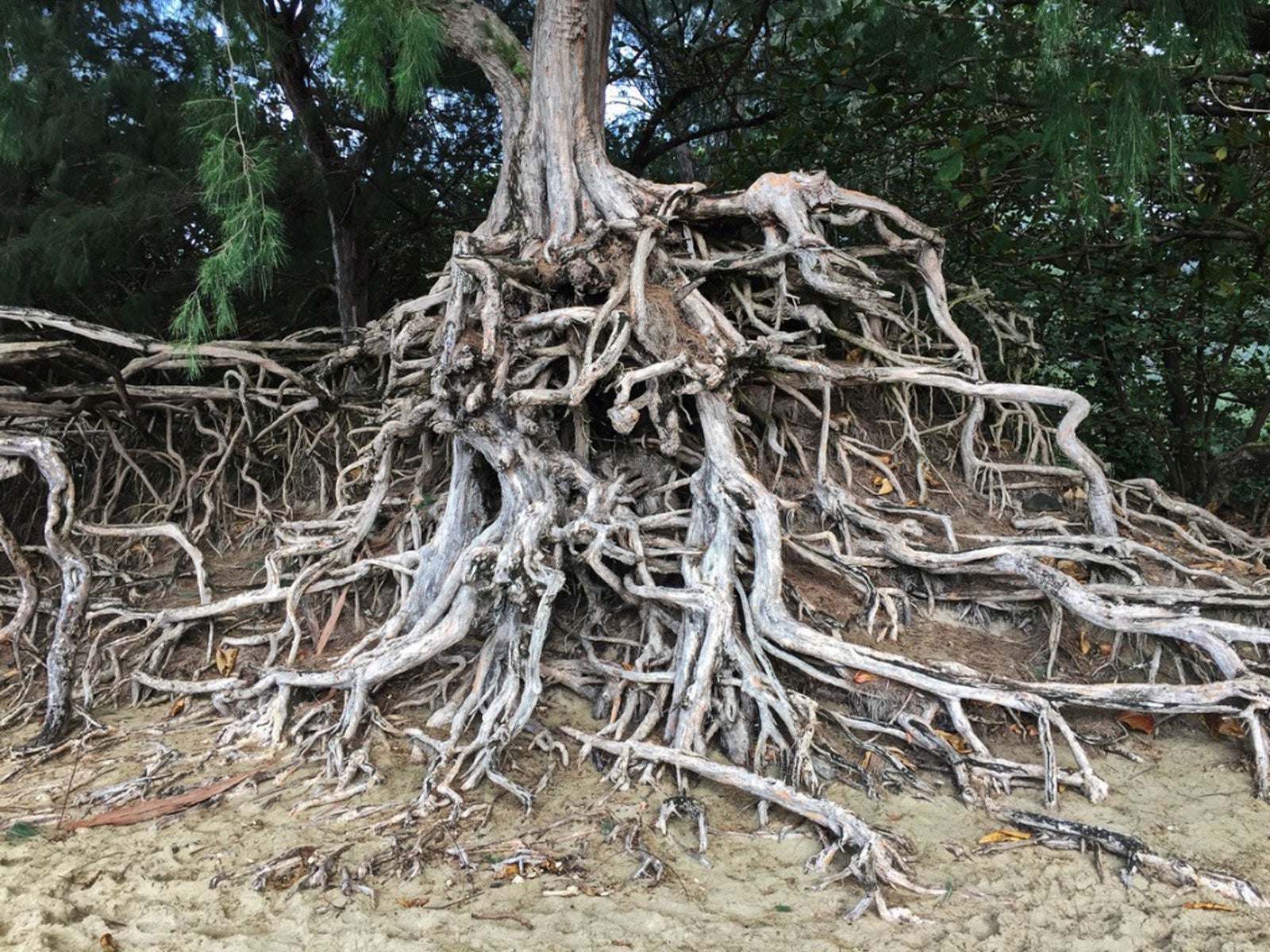Eucalyptus Tree Problems: How To Avoid Eucalyptus Tree Root Damage


Eucalyptus are tall trees with shallow, spreading roots adapted to the harsh growing conditions in their native Australia. While this may not pose an issue here, in the home landscape the shallow root depth of eucalyptus can become problematic. Read on for more information about eucalyptus shallow root dangers.
Eucalyptus Shallow Root Dangers
Eucalyptus trees are native to Australia, where the soil is so leached of nutrients that the trees stay smaller and their roots must dive deep in order to survive. These trees are not likely to suffer damage like that from strong storms and wind. However, eucalyptus trees are also cultivated in many parts of the world with richer soil. In more fertile soil, eucalyptus tree roots have no need to descend very far to search for nutrients. Instead, the trees grow tall and fast, and the roots spread horizontally near the surface of the soil. Experts say that 90 percent of a cultivated eucalyptus’s root system is found in the top 12 inches (30.5 cm.) of soil. This results in eucalyptus shallow root dangers and causes wind damage in eucalyptus, among other issues.
Eucalyptus Tree Root Damage
Most eucalyptus tree problems occur when the ground is wet. For instance, when rain soaks the ground and the wind roars, the shallow root depth of eucalyptus make the trees more likely to topple over, as the foliage on eucalyptus branches acts as a sail. Winds tip the tree back and forth, and the swaying loosens the soil around the trunk base. As a result, the tree’s shallow roots tear, uprooting the tree. Look for a cone-shaped hole around the trunk base. This is an indication that the tree is at risk of uprooting. In addition to causing wind damage in eucalyptus, the tree’s shallow roots can cause other problems for homeowners. Since the tree’s lateral roots spread up to 100 feet (30.5 m.) out, they can grow into ditches, plumbing pipes and septic tanks, damaging and cracking them. In fact, eucalyptus roots penetrating foundations is a common complaint when trees are placed too close to the home. The shallow roots can also lift sidewalks and damage curbs and gutters. Given the thirst of this tall tree, it may be hard for other plants to obtain required moisture if they grow in a yard with a eucalyptus. The tree’s roots sop up everything available.
Planting Precautions for Eucalyptus Root System
If you intend to plant a eucalyptus, place it far from any structures or pipes in your yard. This prevents some of the eucalyptus shallow root dangers from being realized. You might also want to consider coppicing the tree. This means cutting down the trunk and allowing it to grow back up from the cut. Coppicing the tree keeps down its height and limits root and branch growth.
Gardening tips, videos, info and more delivered right to your inbox!
Sign up for the Gardening Know How newsletter today and receive a free copy of our e-book "How to Grow Delicious Tomatoes".

Teo Spengler is a master gardener and a docent at the San Francisco Botanical Garden, where she hosts public tours. She has studied horticulture and written about nature, trees, plants, and gardening for more than two decades. Her extended family includes some 30 houseplants and hundreds of outdoor plants, including 250 trees, which are her main passion. Spengler currently splits her life between San Francisco and the French Basque Country, though she was raised in Alaska, giving her experience of gardening in a range of climates.
-
 Looking For Plants To Give You The Soft And Fuzzies? Try These 5 Fuzzy Leaf Plant Options
Looking For Plants To Give You The Soft And Fuzzies? Try These 5 Fuzzy Leaf Plant OptionsLovers of texture, drama, silver foliage and tactile plants will adore these special sensory garden additions. These fuzzy leaf plant options will leave you all aglow
By Susan Albert
-
 Get Ready For A Summer Of Hummers! Grow These Full Sun Hummingbird Plants and Flowers
Get Ready For A Summer Of Hummers! Grow These Full Sun Hummingbird Plants and FlowersIf you’re lucky enough to enjoy a sunny backyard, make sure you are maxing out on your pollinator opportunities and grow these full sun hummingbird plants and flowers
By Tonya Barnett